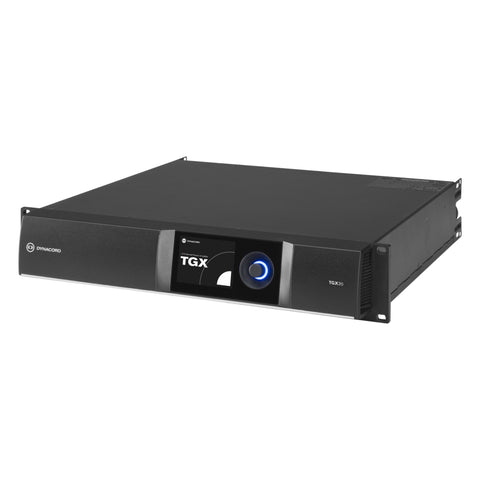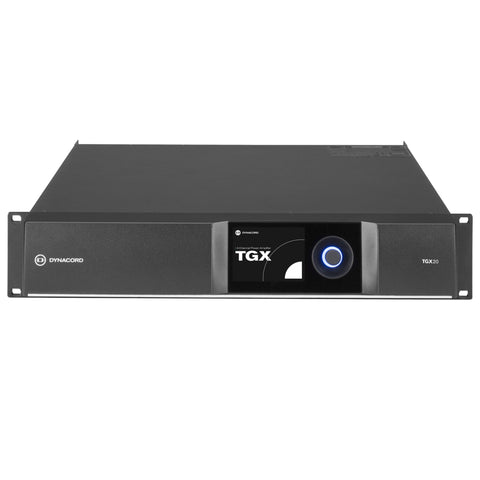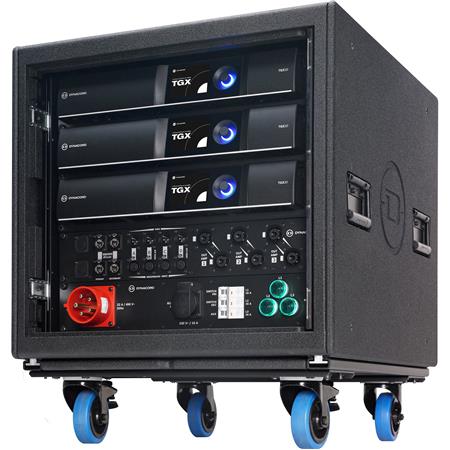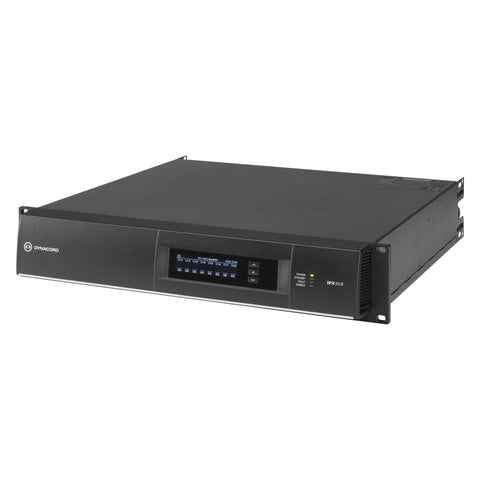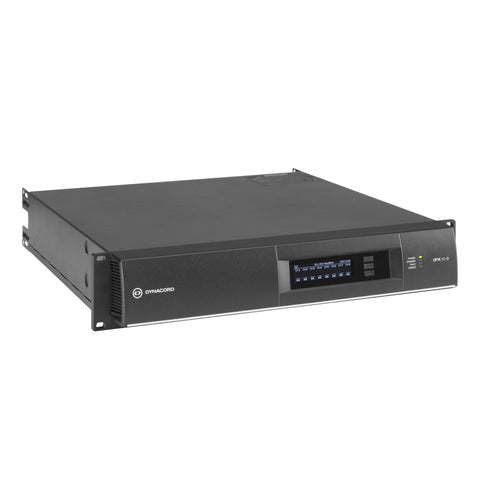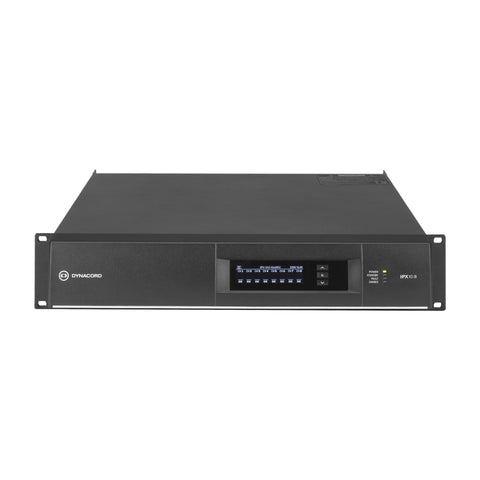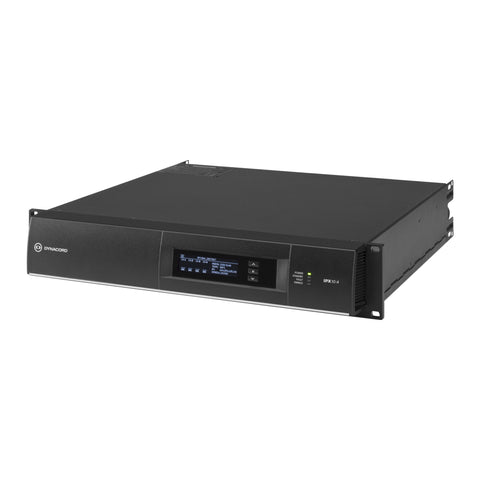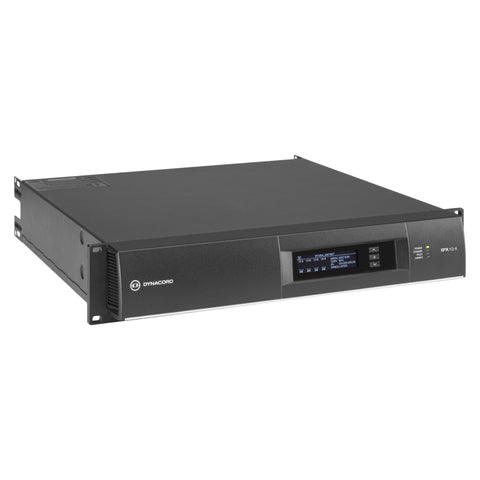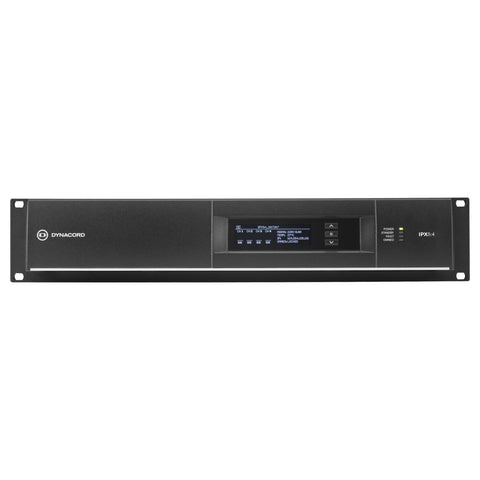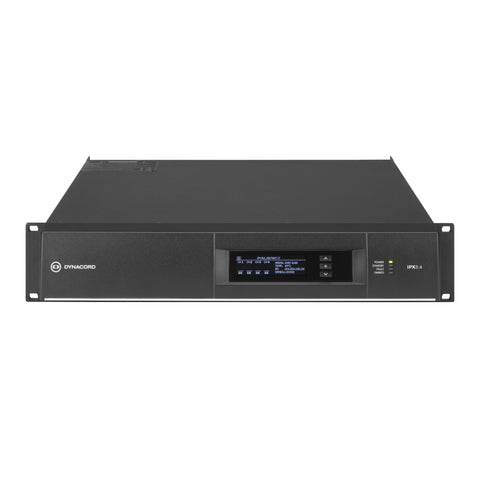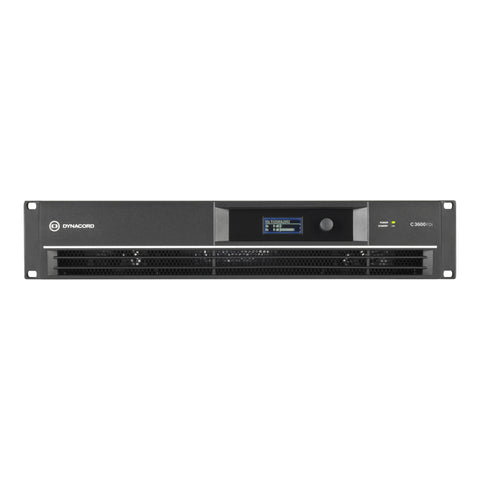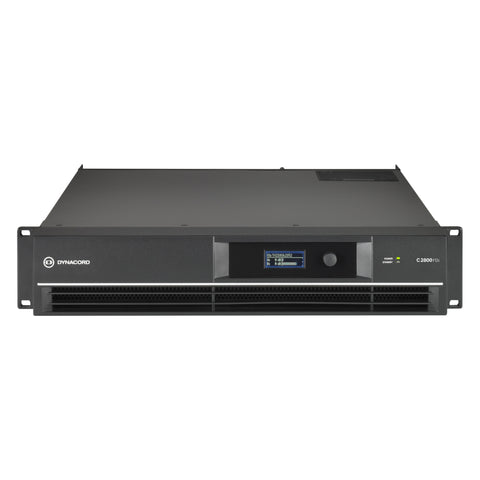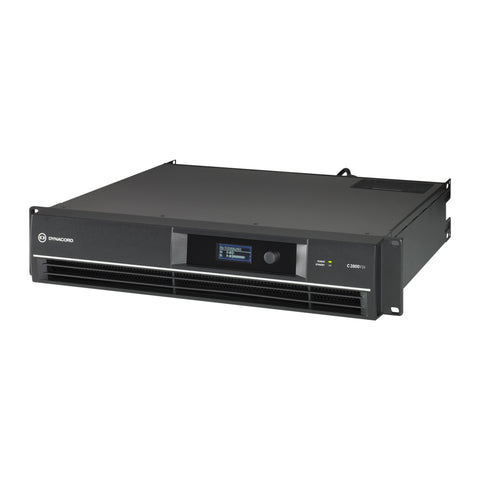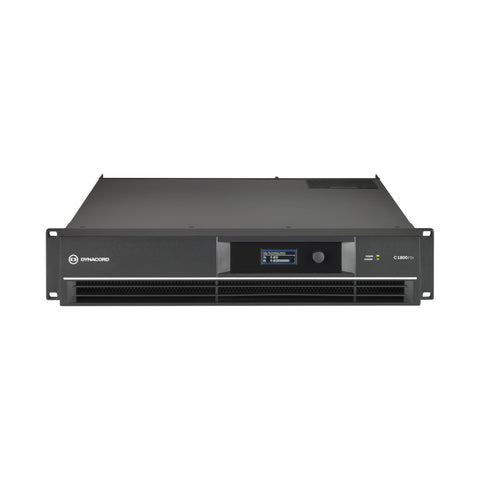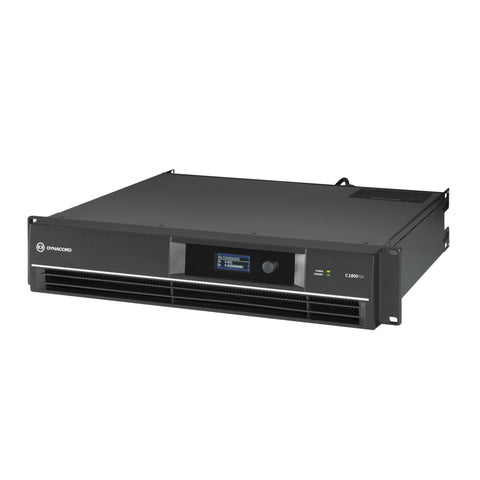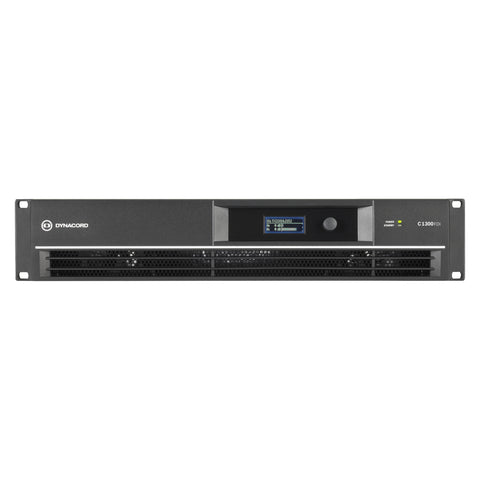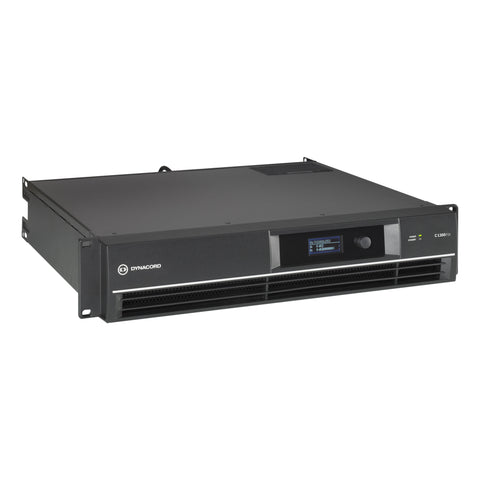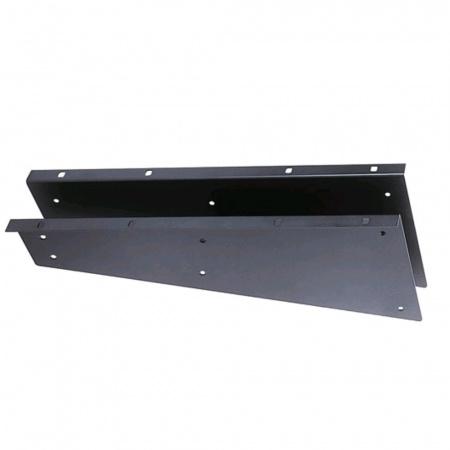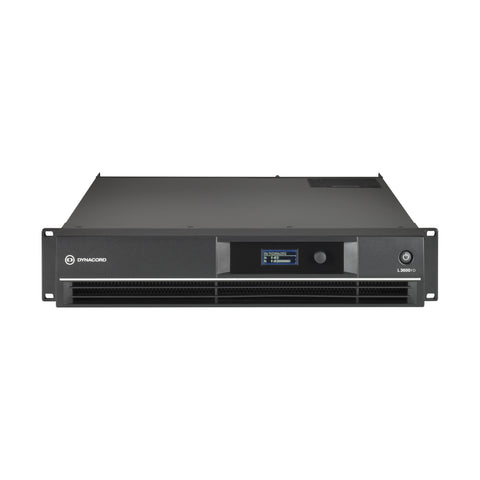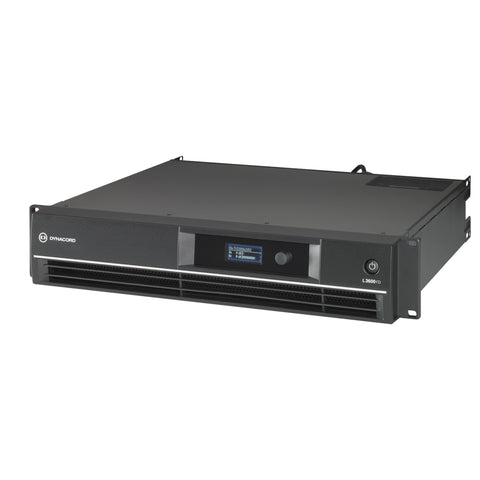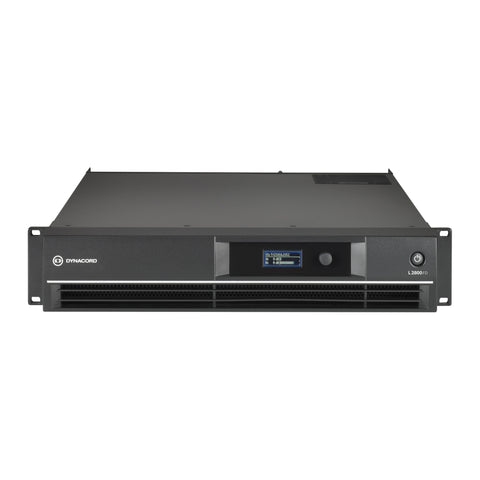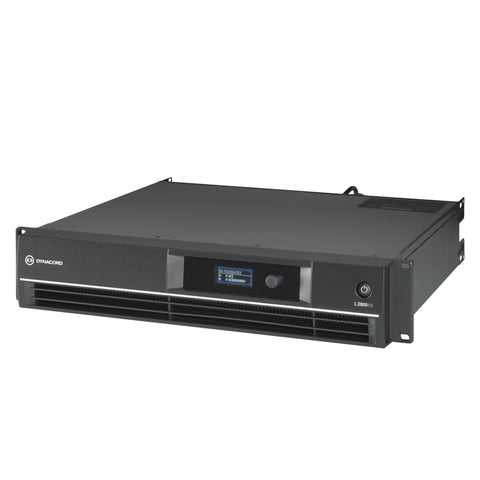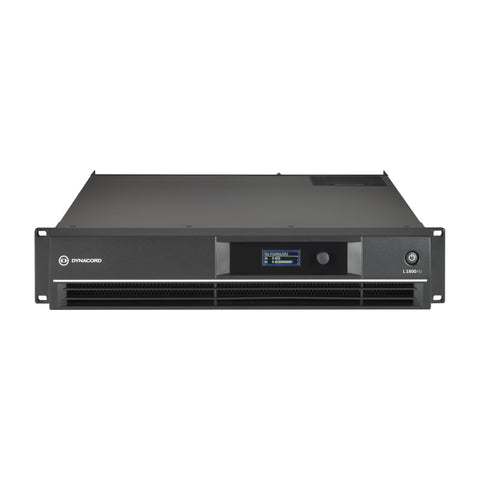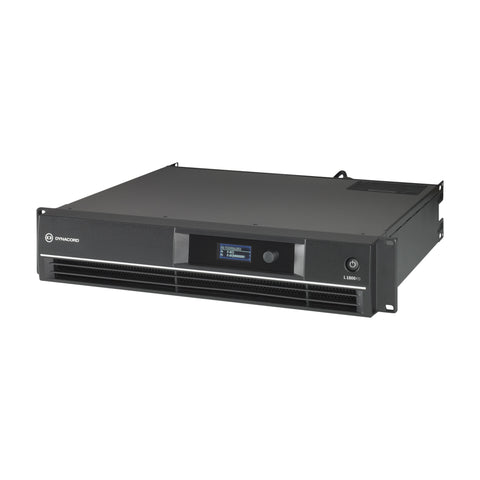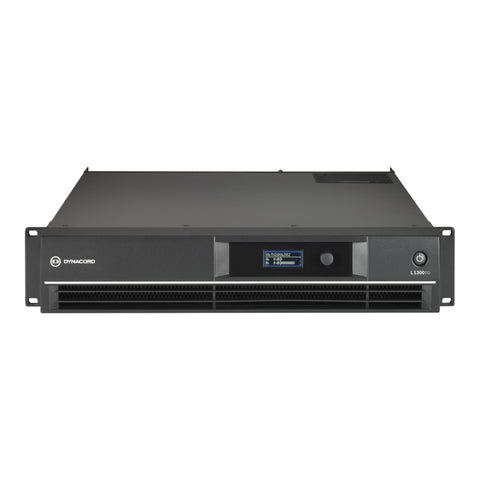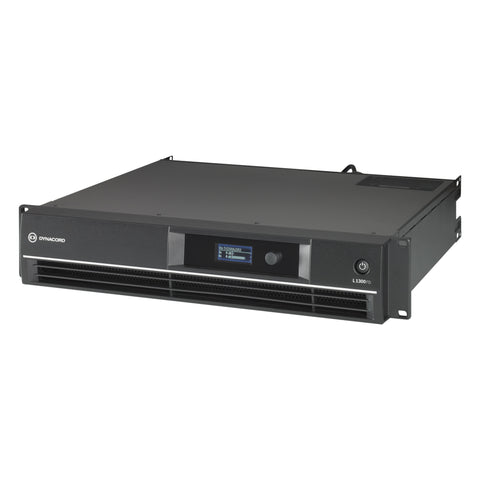VUE Audiotechnik V242 VUEDrive Systems Engine (2 in/4 out) Phoenix connectors
Vendor: VUE Audiotechnik
Available

VUE Audiotechnik V242 VUEDrive Systems Engine (2 in/4 out) Phoenix connectors
The VUEDrive™ Systems Engines are capable of providing the VUE loudspeakers with a sophisticated, networked DSP and amplifier solutions that can enable optimal performance when combined with almost any VUE loudspeaker system. The VUEDrive™ Systems Engines are combining the next-generation DSP technology, onboard SystemVUE networking, and powerful, high-efficiency class D into a 2U rack mount chassis. The line is consisting of three models, that includes the 2-in/4-out V4, the 2-in/6-out V6 as well as the 1-in/3-out V3. Both the V4 and V6 are available in either touring configuration (with front panel LCD interface) or installation configuration (without front panel LCD interface).
FEATURES
- 2U rack-mount amplifier/DSP processors optimized for VUE loudspeaker systems
- Optional front panel controllable LCD/Encoder (touring) and Install (no LCD, remote software control only) versions available
- 96k Hz sample rate, mixed-mode 64-bit DSP, and ultra-premium converters provide 120 dB of dynamic range
- Extremely low latency of less than 1ms (typical is 640 microsecond)
- Maximum input level of +23dB allows for easy interface with any professional system
- Fully accessible real-time monitoring via SystemVUE software
- Optional front panel LCD and non-LCD (install) versions available
- Control each input level and delay (up to 2,000 milliseconds)
- Intelligent DSP monitoring and protection of amplifier functions including over power, voltage or temperature
- New Dante network audio inputs standard (existing units are upgradeable)
- Smart input detection circuit automatically falls back to analog if AES digital signal fails
- Universal integrated UREC™ mains power supply (85-268V) works anywhere in the world
NEXT GENERATION DSP
At the heart of the VUEDrive™ Systems Engines is a powerful and fully customized integrated circuit that is handling all of the processing and system management, that include speaker protection, system-optimized alignment of EQ, time and crossover functions, as well as configuration settings and SystemVUE network capabilities. This sophisticated DSP circuit is used across multiple VUE product classes, including the h-Class powered loudspeakers. This consistency is ensuring that VUE DSP and networking functionality is identical regardless of product class and that different VUE product classes is possible to be easily networked together.
The rugged analog input stage is accepting the input voltages of up to 10V RMS (+22dBu) thus matching any source on the market today, and feeds one of the best converters available on the market today, which is partnered with precision analog components and circuits, raising the definition bar to the levels of high-end esoteric Hi-FI audio systems.
Additionally, VUE’s powerful DSP architecture is making it easy for our engineers to develop new software updates with new and more “factory presets” to expand VUEDrive’s configuration programming so that the V242, V3, V4 and V6 Systems Engines is possible to be optimized for use with an ever-expanding selection of VUE Audiotechnik loudspeakers. From the simplest i-Class configurations to the most advanced al-Class-based flying rigs, the VUEDrive™ Systems Engines are tightly integrated with all VUE Audiotechnik product classes for optimal sonic performance and simplified setup.
The feature set of the VUEDrive range is expanded through regular firmware updates (field installable). Our ongoing software efforts is developing, testing and releasing both new software and firmware which expands the ability of our SystemVUE software to control large groups of Systems Engines (for large portable and installed systems). Other capabilities in development will allow easier implantation of advanced functions like beam steering.
 USD
USD EUR
EUR
 AUD
AUD
 GBP
GBP
 JPY
JPY




